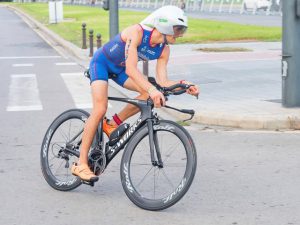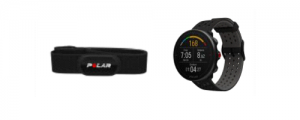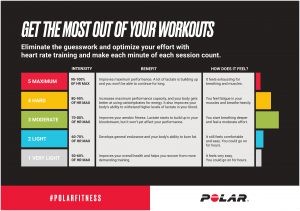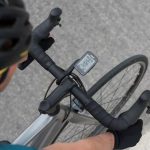Your heart rate is one of the best indicators of how hard your body is working during a workout. Using heart rate zones is therefore a great way to monitor how hard you’re training and it’s easy to see why they’ve been a popular training tool for cyclists for years.
Polar is well known as the market leader in heart rate monitoring and the company’s heart rate sensors are used by amateur and elite athletes across the world. In this article, Polar provides a unique insight into how to approach cycling training and how using a heart rate monitor can really help to improve cycling performance.
Working smarter, not harder
Before you get started, it’s important to understand that an effective plan is all about balance. By creating a workout schedule with some intense days and some days that are gentler, you’ll maximise your results while also lowering the risk of strain or injury. This isn’t a ‘no pain, no gain’ approach but rather a ‘work smarter, not harder’ strategy.
It’s an approach that Polar Ambassador and GB triathlete Yiannis Christodoulou knows well. Inspired to take up triathlon after watching the event at the London 2012 Olympics, Yiannis set out on his journey. It wasn’t easy – he didn’t come from a sporting background and couldn’t swim – and he knew he had to be smart when it came to his training.

“For most people, they are under the impression that they should go hard in every session,” Yiannis explains. “The most common thought is ‘if I train hard and fast, I will get faster’, but that is not the case. You need to be clever in your training… We all know that well-known saying ‘go slow to get fast’.”
Choosing the right tech
Another key starting point when you’re training by heart rate is to make sure that you’ve got the right tech to measure it with. This way, you’ll be constantly aware of your beats per minute (BPM) – the essential metric for this type of training.
There are a few different options when it comes to heart rate monitors. You can wear one on your chest, your arm, or your wrist. So how do they differ?
The classic chest strap uses an electrocardiogram (ECG) to measure your heart rate. It can then be connected to a combination of devices, including your sports watch, bike computer, fitness app, and/or gym equipment to give you a real-time measurement of your heart rate.

The arm strap works in a similar way with your devices, but uses optical heart rate tracking instead – just like the fitness watch on your wrist. Your watch differs from the chest and arm straps in that you don’t need any other devices because all the information you need for checking your heart rate is right there on the screen.
Using heart rate zones for exercise
Identifying your maximum heart rate
In order to get the most out of heart rate training, you need to find out what your maximum heart rate is while cycling. This can be done by taking a VO2 test in a lab or by doing a Functional Threshold Power (FTP) test as fast as you can with a heart rate monitor and then taking the max from there.
British Cycling has a handy power calculator where you can input your FTP data in order to work out your heart rate zones and power zones.
Understanding heart rate zones
There are five different heart rate zones (1–5) and your training plan can (and should) include workouts in all five zones. The following chart shows the level of intensity and percentage of maximum heart rate used within each heart rate zone. You can also see the different effects that each zone will have on your body.

According to Yiannis, many of the pros train within heart rate zone 2 or power zone 2. But why is zone 2 training so beneficial?
“The main benefit is that it builds aerobic base and endurance,” he shares. “By improving aerobic capacity, this improves your ability to maintain a faster pace for a longer period of time. Of course, you still need to do the higher intensity efforts, but zone 2 is the basis and foundation from which to begin to build your faster pace.
“If you have a strong aerobic capacity, it will also allow you to recover quicker between those higher intensity efforts,” he adds. “Zone 2 training should be a big bulk of your weekly training.”
Adding variety to your workout
Variety is another important element if you want to improve your fitness or become a better cyclist. When it comes to your heart rate zone training, paying attention to the key differences indicated by heart rate zones will ensure that you get the most out of what you put in.
An effective cycling plan or workout plan will include different types of workouts with varying frequency, duration and intensity spaced out so that you have time to recover. This means that some workouts should be short and intense, some long and light, and some can even be long and tough. It’s the variety that makes your workout regimen effective.
“What I like about heart rate zones is that if you cycle for 60 minutes (for example, at the same heart rate on two consecutive days) your distance/pace will be different because your heart rate is based on how your body feels on the day,” Yiannis concludes. “So, if you’re tired then when you cycle it’s likely your heart rate with be higher and therefore speed will be slower. So this is why it’s important to train with heart rate.”
Find out more about Polar’s exciting range of chest straps, arm straps and watches at Halfords.com.

